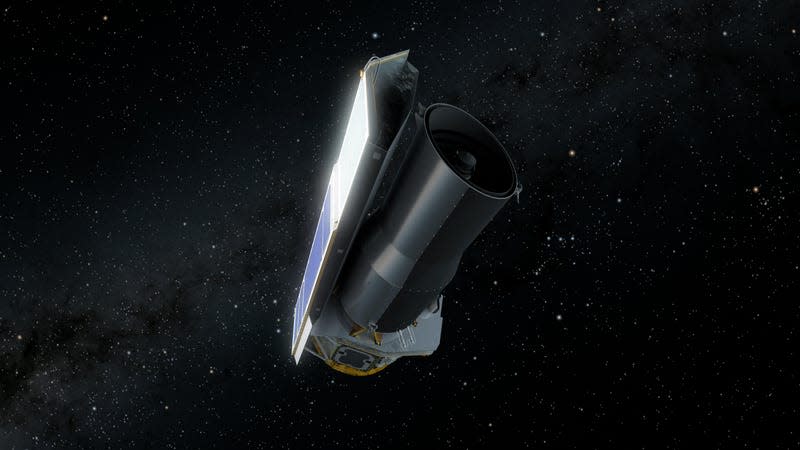Proposed Mission Seeks to Resurrect Retired Spitzer Space Telescope

For more than three years, NASA’s Spitzer Space Telescope has been idly coasting around the Sun while locked in a retirement safe mode, while its successor, the Webb Telescope, took over its cosmic observation duties. An upcoming servicing mission, however, could give the old telescope a new purpose: protecting Earth from dangerous asteroids.
This week, Washington-based company Rhea Space Activity announced that it has been selected to develop the Spitzer Resurrector Mission. The mission would travel to the Spitzer telescope to service and restore it to operations, with plans to launch in 2026, according to the company. Spitzer is currently in orbit around the Sun, trailing behind Earth.
Read more
These Winning Close-Up Photos Show Life That's Often Overlooked
Remembering Enterprise: The Test Shuttle That Never Flew to Space
Spitzer had been studying the universe in infrared light for 16 years before NASA decided to end its mission, putting the telescope in safe mode in January 2020. Its successor, the Webb Telescope, would launch later in December 2021.
NASA made the decision to cease Spitzer’s science operations in anticipation of Webb’s launch, although the telescope had still been functioning at the time. At its current distance from Earth, about twice the distance between the planet and the Sun, NASA can’t communicate directly with the telescope, which is why a servicing spacecraft needs to rendezvous with it in orbit.
The Spitzer Resurrector Mission, in partnership with the Smithsonian Astrophysical Observatory, Johns Hopkins University Applied Physics Laboratory, Blue Sun Enterprises, and Lockheed Martin, would include a servicing spacecraft traveling over 186 million miles to get to the telescope.
“This would be the most complex robotic mission ever performed by humanity.”
Using in-space service assembly and manufacturing (ISAM) techniques developed by the Department of the Air Force and the U.S. Space Force, the spacecraft would repurpose the Spitzer telescope, allowing it to detect and characterize potentially hazardous Near Earth Objects. “The ISAM implications of resurrecting Spitzer are jaw dropping,” Shawn Usman, CEO of Rhea, said in the company’s statement. “This would be the most complex robotic mission ever performed by humanity.”
Spitzer launched in 2003 with an original mission timeline of just five years, but the telescope kept on going, observing comets, asteroids, and even finding a previously unidentified ring around Saturn. The telescope also famously detected the seven Earth-size planets in the TRAPPIST-1 system, which still remains the largest number of terrestrial exoplanets found orbiting a star.
It will be exciting to see Spitzer come back to life in a new form, helping scientists monitor our cosmic surroundings from incoming threats.
For more spaceflight in your life, follow us on Twitter and bookmark Gizmodo’s dedicated Spaceflight page.
More from Gizmodo
Sign up for Gizmodo's Newsletter. For the latest news, Facebook, Twitter and Instagram.
